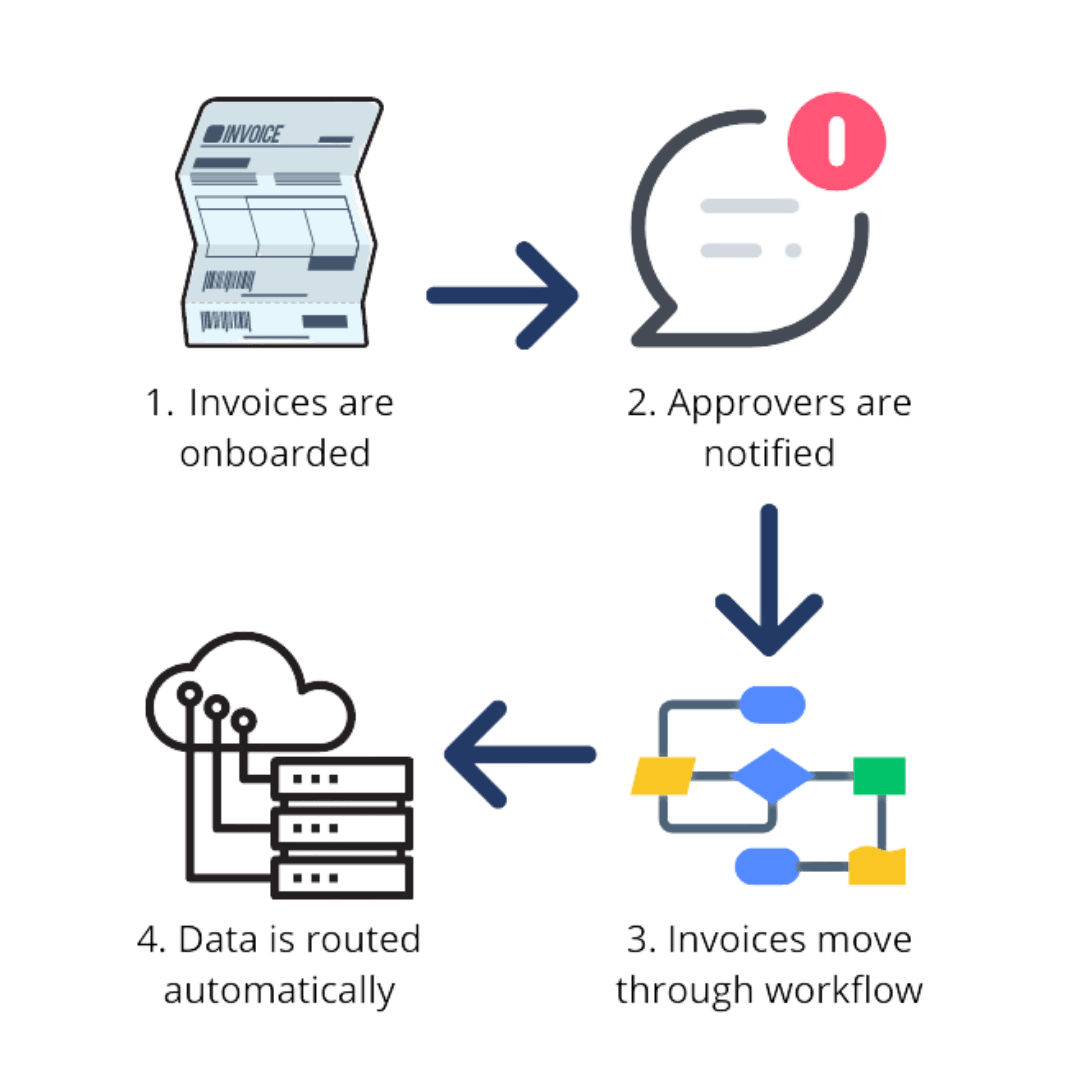An example of a workflow can be anything from automating an accounts payable invoice review process, to the hiring and onboarding of an employee, to the process of reviewing and signing a contract. When people refer to a workflow, they often mean an implemented software or service that manages that business process for them. A workflow helps to eliminate the manual and repetitive tasks within a process, usually a document-heavy one.
 An accounts payable workflow example would consist of digital invoices being loaded into a workflow system, like Recordsforce Cloud, and then approvers are automatically notified by the software of a new invoice to review. If it needs to be reviewed by another staff member, it can be automatically routed to the next person immediately. Once approved, the workflow system can even route the required data for the invoice to be paid.
An accounts payable workflow example would consist of digital invoices being loaded into a workflow system, like Recordsforce Cloud, and then approvers are automatically notified by the software of a new invoice to review. If it needs to be reviewed by another staff member, it can be automatically routed to the next person immediately. Once approved, the workflow system can even route the required data for the invoice to be paid.
An example of a human resources workflow would be the automation of the process of hiring and onboarding new employees. Instead of manually trying to schedule and track possible candidates, a workflow can move candidates throughout the hiring process without anyone needing to manage it. A candidate will apply via an e-form or digital form that then kicks off a workflow to send the resume and details to the hiring manager for review. If the candidate is approved to continue on the hiring process, they are automatically sent an invitation to schedule an interview, and from there, even schedule a training session, if necessary. If you are looking for a more in-depth example of a human resource workflow, read more on how Recordsforce used our cloud-based document management system to automate our hiring process and onboard 50 employees in one week.
Another example would be a legal or contracts workflow. You can use an automated workflow system to submit, review, edit, sign and manage contract retention all in one place. For instance, a contract is written up, the workflow is triggered to send the contract to the first reviewer. Once reviewed there, the contract can then be moved immediately to the next reviewer/approver, if needed. It can even be routed automatically to someone outside an organization for a required signature. Workflows help to automate reviews and all multi-step approvals. Systems like Recordsforce Cloud can even allow you to set renewals alerts and notifications so you know when it’s time to review an old contract.
These are just a few examples but in all, a workflow system helps to accelerate completion and drive accountability, while boosting productivity in any process. Workflows are essential to creating consistent, accurate and efficient business processes. With the ability to see where anything is at any given time, workflow enables more oversight and visibility of your processes and where they might consistently get stuck. They also help to free up your employees to focus on the tasks they need to complete, instead of following up internally to find out where their next task is. If you have internal processes that are constantly slowing down your production and are interested in learning more about workflows and other capabilities within our document management system, request a demo with our team!

